Remote Control
I don’t believe that 2020 will be a year that anybody will forget in a hurry. The impact on each and every one of us has been significant. From titans of industry to small business owners, frontline workers to CEOs of large organisations and university students to pre-school children; nobody has escaped the coronavirus effect. As we approach the one-year anniversary of the first reported cases of Covid-19 in China, the planet has changed if not forever, then certainly for the foreseeable future. From a working perspective, we are now living in a world where more people are working remotely than ever before. At best, some organisations can manage agile working but the overriding situation is that we are now interacting face-to-face less than ever before in our working day. The big question now is, how do we lead in this new landscape?
I believe I’m fairly safe saying that all leaders, or nearly all, are familiar with the leadership by example model. We effectively model what we want to see; behaviours, expectations, how we execute and how we develop excellence in our businesses. All leaders that use this technique are endeavoring to, according to Gahndi “be the change you want to see”. In a remote or agile working world, however, this tactic is at least partly removed. So, what are leaders to do?
Over the past nine months I have been working with leaders in a range of sectors and settings and the apparent common theme is that the language we use has become more important than ever. This is now our competitive advantage if we can explore it and improve it. Whether on Zoom, Teams, What’s App groups or a conference call, our choice of words is now more crucial than ever. Through my work with leaders during this time, I’ve refined some powerful leadership phrases that I hope will allow us to take back some control in a remote world.
1) Leadership Language in Four Words:
What do you think?
This is extremely powerful and can draw people into conversations and encourage them to think more deeply about an issue. Key to this language is that it’s empowering, but be warned – once you ask the question, you have to actually be prepared to listen and take the view onboard. By allowing your people to share their views, you will learn a lot about them, but the onus is on you as a leader to listen and learn about where your people are.
2) Leadership Language in Three Words:
I don’t know
I truly believe that there is nothing wrong with a leader saying, “I don’t know”. I will put a caveat up front here though. If you spend all day saying this, you may find you don’t keep you job for long! Seriously though, there are a number of leadership thinkers who would agree with the power of these three words. But what is it that makes these words so important? In my mind, it is the language of vulnerability which is a precursor to the holy grail of authenticity. And let’s be honest, in the current climate we really won’t know and it’s important to model to our teams that its OK not to know…especially at the moment.
This language will also encourage people to drop the 1980s notion of the Hero Leader, who can see, know and do all! It will instead show that leaders’ can’t actually know everything about everything all of the time. And the perfect language combo? Twinning “I don’t know” with “what do you think” – this is particularly powerful.
3) Leadership Language in Two Words:
Thank you
This is the language of appreciation. Business author Tom Peters encourages leaders to say “thank you” to ten people by 10:00am every day. There are a couple of points to bear in mind with this. Firstly, make sure that it is genuine appreciation and thankfulness, which is the difference between praise and flattery as Dale Carnegie taught us. Secondly, some people have challenged this and wonder if it could become too much. My response is always that maybe it could. But really, how many people do you know that finish a long day at work, arrive home and say to their loved ones; “Do you know what? I’m sick and tired of being appreciated at work”? This was probably said by no one ever!
4) Leadership Language in One Word:
We
This is a key part of the power of plural pronouns. This has always been of vital importance, in my opinion, but never more so than now in our remote working landscape. From the latest Gallop research, we can see that employees are feeling more unheard, more unseen, more disconnected and less part of the company culture than ever before. Therefore, using words like “we”, “us” and “our” can help people feel part of and think like a team. I’d even go as far as to suggest significantly or completely eradicating the use of “I”, “you” and “them”. If we want a team, we have to talk team.
In summary, we know that the language we use can make or break people, cause our teams to fly or fall or the ship to sink or sail. We know this to be true as parents or in our personal relationships and it’s important to remember how important our words are as a leader. The Four, Three, Two, One Language of Leadership has been road tested and has proven to be useful for leaders when having to navigate this complex Covid era. So, keep leading through the power of language and seize that remote control!



